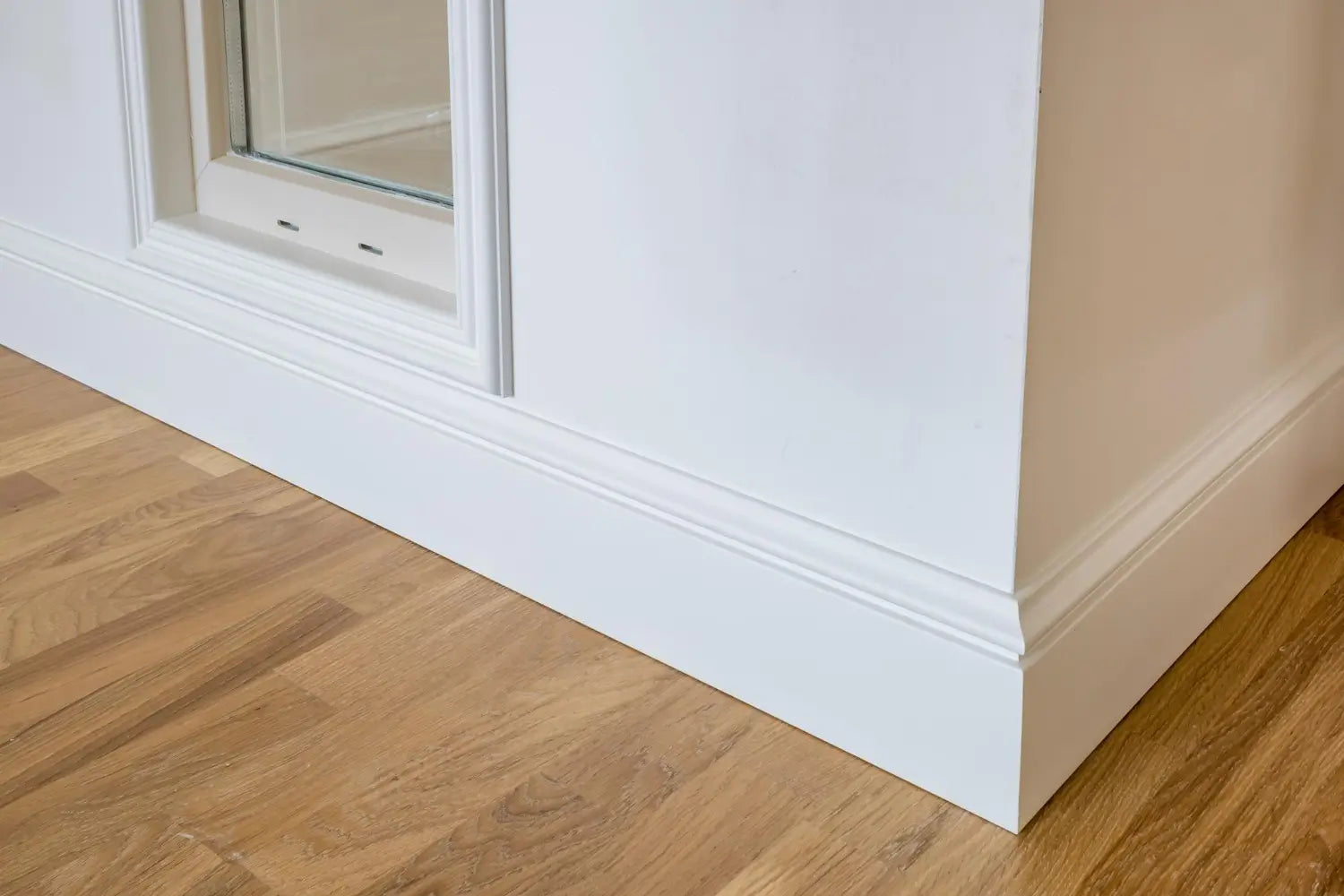
Should You Paint The Walls Before Installing Skirting Boards?
When renovating your home, one of the most common questions is whether to paint the walls before installing skirting boards or after. Both approaches have their pros and cons, and the order in which you tackle these tasks can affect your results.
It’s generally better to paint the walls before installing skirting boards. This allows for cleaner paint lines and easier touch-ups. However, if you prefer to protect your walls from paint splatters during installation, you can install the skirting first. Both methods have their advantages, depending on your priorities.
In this blog post, we’ll break down both options to help you decide which is best for your next DIY or home improvement project.
What Are Skirting Boards and Why Are They Important?
Skirting boards (also known as baseboards or mopboards) run along the bottom of your walls where they meet the floor. These simple yet essential elements play both an aesthetic and a practical role. They create a neat, polished look and protect the walls from dirt, damage, and wear, especially in high-traffic areas.
Whether you're aiming for a traditional, modern, or minimalist look, skirting boards can add that final touch to your room. Given their importance, the process of installing them can be influenced by the painting process. Should you paint the walls before installing the skirting boards, or is it better to install them first? Let's explore both options.
Painting Walls Before Installing Skirting Boards
Many professionals recommend painting the walls before installing skirting boards. Here’s why:
1. Cleaner Paint Lines
When you paint the walls first, you can roll the paint right up to the floor, ensuring that the edges are clean and sharp. There’s no need to worry about paint getting on your skirting boards since they aren’t installed yet. This makes for a much simpler, neater job.
2. Easier Touch-Ups
Painting first also allows you to fix any paint smudges or mistakes before the skirting boards are in place. Once the skirting is installed, it can be trickier to reach the areas near the base of the wall, especially if there are any paint drips or missed spots. Painting first gives you a smooth canvas to work with.
3. Time-Saving
If you’re looking to speed up the process, painting the walls before installation can save time. Without having to worry about protecting the skirting boards, you can focus solely on painting the walls and getting a flawless finish.
Challenges of Painting Before Installing Skirting Boards
While painting before installing the skirting boards has many benefits, there are a few challenges to consider. One of the main issues is the risk of splattering paint while installing the skirting. This is especially a concern if you need to nail or glue the boards in place. However, with a little extra care and the right preparation, this can be avoided.
Tips for Painting Before Skirting Boards
-
Use painter’s tape to protect the floor and edges of the wall where the skirting will sit.
-
Take your time around the bottom of the wall to ensure smooth, straight lines.
-
Protect the floor by using drop cloths to catch any stray splashes.
Installing Skirting Boards Before Painting the Walls
Some people prefer to install their skirting boards first. Here are some reasons why:
1. Wall Protection
Installing the skirting boards before painting protects your walls from accidental splashes during the installation process. This is particularly important if you’re working with delicate walls or want to ensure they stay in perfect condition.
2. Better Alignment
With the skirting boards installed, you have a clear edge to align the wall paint against. This can help create a cleaner, more precise finish, especially when aligning the top of the skirting with the floor. Plus, it’s easier to install skirting boards when they’re fitted against an already-painted wall.
Challenges of Installing Skirting Boards First
One downside to this method is that it makes painting the wall more challenging. You’ll need to be extra careful around the skirting to avoid getting paint on it. This often requires extra preparation, such as using painter’s tape or carefully brushing the paint in those areas.
Tips for Installing Skirting Boards Before Painting
-
Mask the skirting boards with painter’s tape to prevent paint from spilling onto the trim.
-
Use a small brush for precision work along the edges where the skirting meets the wall.
-
Be mindful of your tools: Use a roller for larger areas and a brush for edges to ensure the paint goes right up to the skirting.
The Impact on Wall Finish
Whichever order you choose for installing skirting boards and painting, the final look can vary. Painting first tends to give you a cleaner edge along the skirting, making it easier to achieve a crisp, polished finish. On the other hand, installing the skirting boards first can give you a better edge when aligning the wall and skirting, but it may require more effort to paint neatly around the trim.
What Do the Professionals Recommend?
Professionals often suggest painting your walls first for the most straightforward and time-efficient process. It allows you to work with a clear and clean edge at the base of the wall, leading to a more seamless look. However, if you’re worried about wall protection or want to avoid touching up paint later, installing the skirting boards first might be a better option.
Conclusion
Choosing whether to paint the walls before or after installing skirting boards comes down to your personal preferences and project needs. If you want cleaner lines and easier touch-ups, painting first may be the best choice. But if you prefer to protect your walls from accidental splashes and ensure perfect skirting alignment, installing the boards first may suit you better.
No matter which method you choose, MR Mouldings offers a variety of high-quality skirting boards, architraves, and mouldings to complete your renovation. Browse our collection today and find the perfect finishing touch for your home!



